Artist Julie Deery is working on a mosaic mural for the wall of the Santa Fe Rail Trail.
The location for the mosaic mural is 130 feet of cinderblock wall along the Rail Trail just north of Siringo Road in Santa Fe.
The theme of the project is “Generations” with the goal of having community members of all ages work on the project.
Currently there is no formal funding or grant for the ongoing project, which is being created by volunteers using donations of materials and cash.
A list of materials needed and instructions for donations can be found at Julie’s website.

Several of the photos in this article are courtesy of Daryl Black, Blacks Crossing Photography and Writing.
Already Successful
The mosaic mural will be completed in additional segments, but so far the projects has already succeeded at community engagement based on the photos of volunteer community artists at work.
The result speaks for itself.
The first segment shown above is wonderful: a night sky of resonating stellar mandalas over a terracotta desert landscape.
I looked at it and thought: How do you capture the intensity and energy of the night sky of the high altitude desert? Like that.
Julie spent most of the summer of 2002 holding community mandala-making popup sessions facilitated by Vital Spaces and ArtWalk Santa Fe.
Fifth-grade students from Aspen Magnet School made ceramic birds for the mural, and participants at a tile workshop at Raven Tree Studios in Eldorado made “wisdom stones” ceramic plaques inscribed with quotes for the base of the mural.
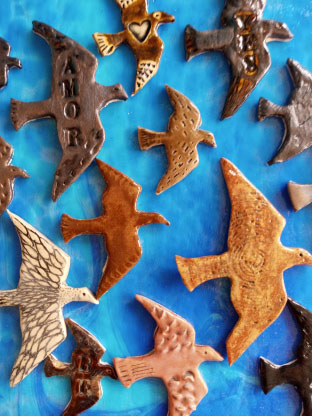
Many of the bicycle sprockets used for the sprocket mandalas were donated by local business Mellow Velo.
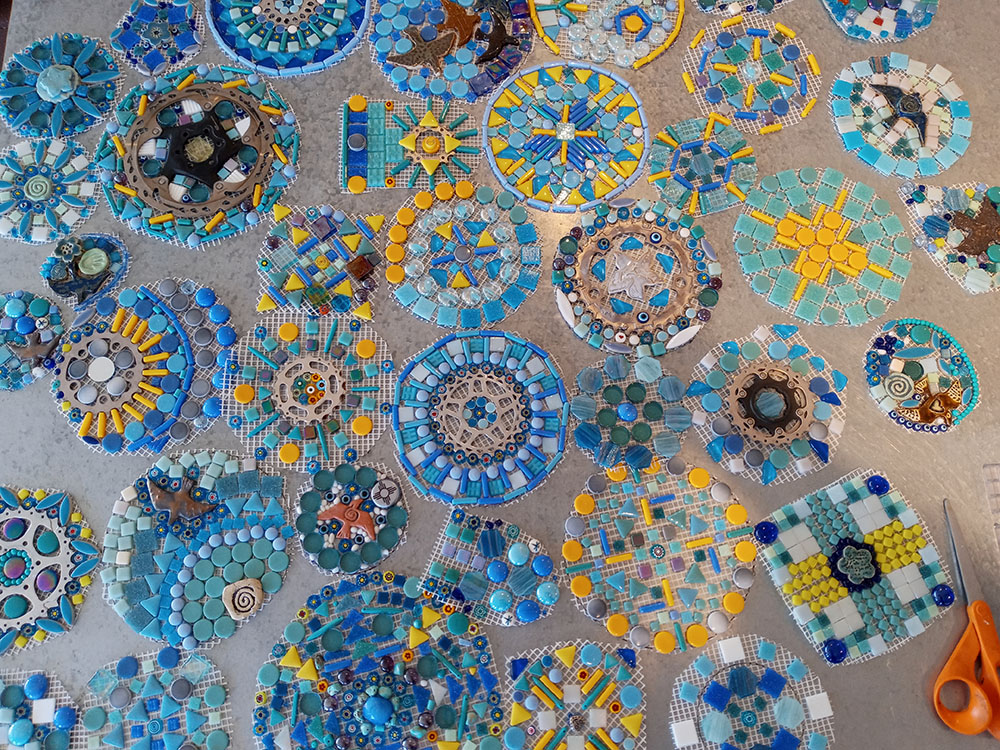
Materials and Methods
This project uses mesh for laying up elements in advance. Mesh is sometimes used for outdoor mosaics on vertical walls, but definitely not for horizontal elements where water can pool or stand.
(Here I am speaking of handmade mosaics of small tiles not factory sheets of larger tiles with factory adhesives precisely applied.)
Remember, the glue used to attach tiles to mesh is a potential Achilles heal if water gets to it. All that is required for that to happen is to have a residue of glue smeared up the side of the tile so that grout doesn’t cover it.

If you do use mesh for outdoor murals, make sure the glue is applied in the centers of tiles away from the edges. Do not cover the entire bottom of the tile with glue. Leave some glass bare so that the thinset mortar can bond directly to the glass.
Even a mosaic mounted in thinset mortar needs to be expertly grouted and sealed with three applications of a tile and grout sealer.
An outdoor mosaic with elements attached with adhesive instead of thinset mortar needs to be kept out of standing water. They need to be checked annually and resealed as needed for long life.
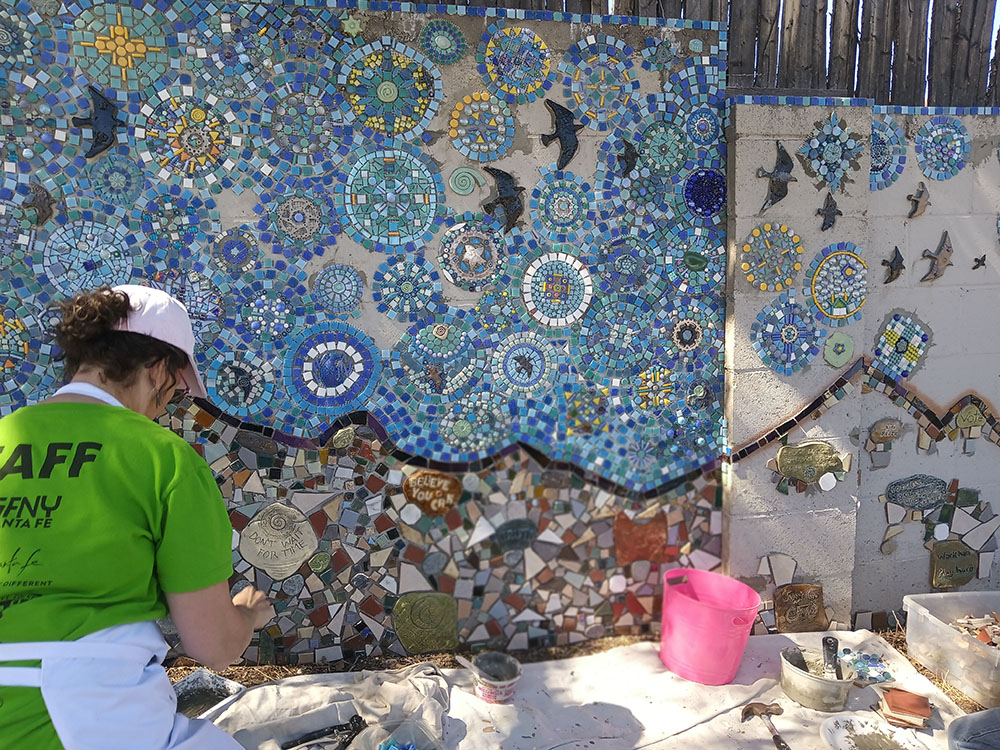
Caveat
Cinder Block walls are routinely destroyed by freezing and thawing water. For this mural to last, the wall must last. That requires that the backside and top of the wall be painted at a minimum. A hydraulic mortar would be preferred.
I couldn’t find the photos, but there was a large figurative mosaic mural destroyed in less than two years, and all because they didn’t adequately paint or mortar the backside of a cinderblock wall or the top of it.
The water pooled inside the porous blocks just above the horizontal layers of mortar. Then it froze and broke the blocks free of the mortar. That was in the Texas panhandle I think, or maybe the Dakotas. It was someplace unforgiving and decidedly not Mediterranean in climate.
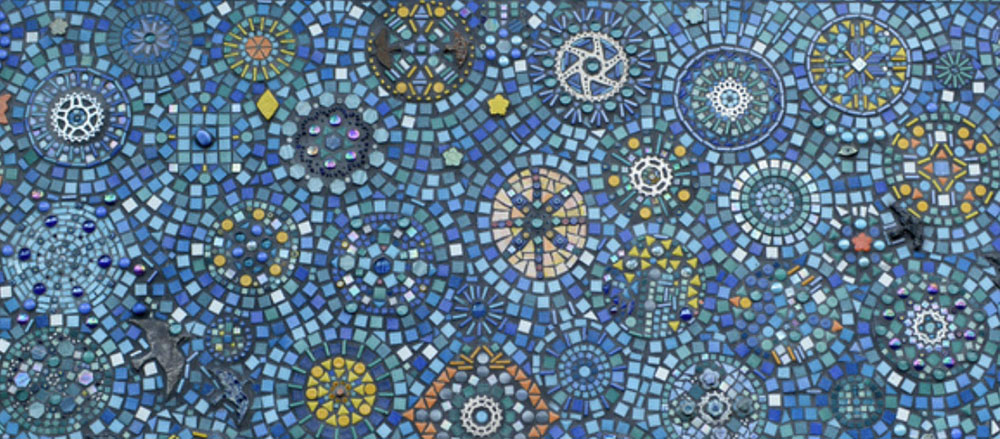

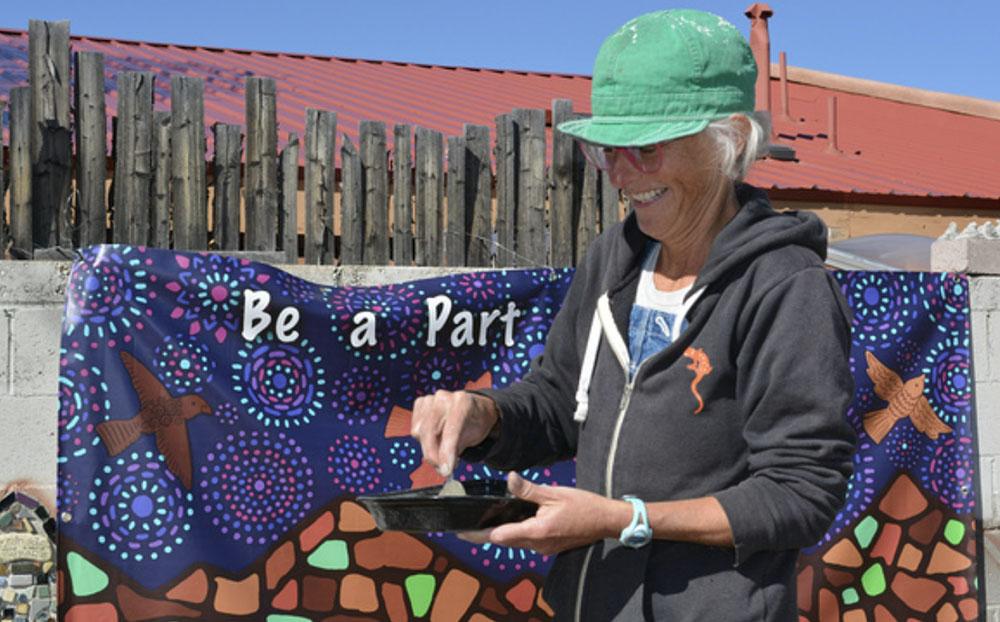

Leave a Reply